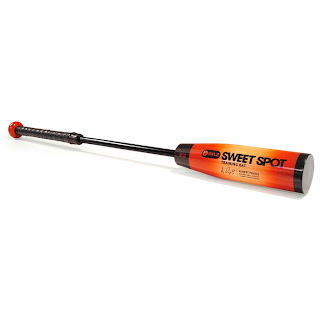If you watched the 2008 Baseball College World Series, you quickly realized that great college hitters can catch up to any fastball regardless of the velocity. You saw batters over and over, on the ESPN TV Coverage of the CWS in Omaha, hit mid-90s to upper-90s fastballs with amazing power and bat speed. You saw college baseball batters that apply and execute one of the most important and basic skills of hitting a baseball, the skill of "hitting the ball where it is pitched".
The philosophy of most pitching staffs today is that the job of the pitcher is to allow the batter to get him self out. Pitching coaches teach and coach the pitcher to keep moving the ball in or out, up or down, and to never leave it over the plate. A batter often does not get the same pitch in an at-back and may not see the same pitch in several at-bats. My point here is that to become a great hitter and successful player at any level from Little League, to High School, to College and into the Pros, you must be able do the following:
1. Hit the fastball to all fields.
2. Hit the curve-ball or change-up to the opposite field.
3. Be disciplined to swing only at strikes. What is the secret to hitting to all fields? There are only two parts to this puzzle. What pitch and location should you expect and adjust to and where should you attack each pitch location. There are two simple principles on "expecting and adjusting" at the plate. The batter should expect a pitch away and adjust to the pitch "inside of away".
The baseball batter should expect a fastball and keep the hands back to allow an adjustment to hit the off speed curve or change-up. Where each pitch location should be attacked?
Here are the correct locations to attack each pitch:
1) INSIDE FASTBALL - Batter attacks it as quickly as possible. Contact with the ball is made in front of the plate and often in front of the "front or leverage" leg. This pitch should be pulled. Right-handed batters should pull the ball to left-field and left-handed batters should pull the ball to right-field. The amount of hip movement is dictated by how far inside the pitch is. The closer the pitch is to the batter, the more the hip turn movement will be. This pitch location should always be pulled.
2) MIDDLE FASTBALL - Batter should attack this pitch as soon as it gets behind the front foot. The closer the pitch is to the batter, the quicker it will be attacked as it gets inside the front foot. This pitch should be hit back through the box over second base. The amount of hip movement and pulling action will be dictated by how far in or out the ball is over the middle of the plate.
3) AWAY FASTBALL - The batter should attack this pitch as it gets deeper into the "plate' or just inside the instep of the back foot. This pitch should be hit to the opposite field. The hip turn and body rotation is limited when hitting the ball to the opposite field.
4) CURVE-BALL and CHANGE-UPS - Most of the off speed pitches are attacked at the same location as the away fastball. These pitches are hit to the opposite field. A curve ball that is hung or left inside may allow the batter to turn on it. But, 90% of all off speed pitches are hit deep over the plate at the instep of the back foot of the batter.
COACHING POINT: A batter must expect anything with certain counts. When a batter is down 0-2 or 1-2, the batter must even up the stance, take the lower body out of the swing, and us a top-half swing to allow the batter to hit any pitch and to put the ball in play. The batter with two strikes will not take as "big" a swing as a batter ahead in the count 1-0, 2-0, or 3-1.
N
ick Dixon is the President and founder of Nedco Sports, the "Hit2win Company". Nedco Sports operates
CoachesBest.com, and
BattingCagesDirect.com. Dixon is also an active and full time high school baseball coach with over 25 years experience.
Dixon is widely recognized as an expert in the area of baseball training, practice and skill development. Coach Dixon is better known as the inventor of several of baseball and softball's most popular training products such as the
Original BatAction Hitting Machine, SKLZ
Derek Jeter Hurricane Hitting Machine, Original Hitting Stick, Hit2win Trainer, SKLZ Target Trainer, SKLZ Derek Jeter ZipnHit Pro, and Strikeback Trainer.
Dixon is also a contributing writer for BaseballCoachingDigest, the Baseball 2Day Coaches Journal, Batting Cage Builder, the American Baseball Directory and the Hit2win Baseball Coaches Monthly Newsletter.
Dixon has 5 blogs related to baseball training including the BaseballCoachingDigest Blog, CoachesBest Training Blog, Hurricane Machine Training Blog, Batting Cage Buyers Blog, and the Bat Action Training Blog.








